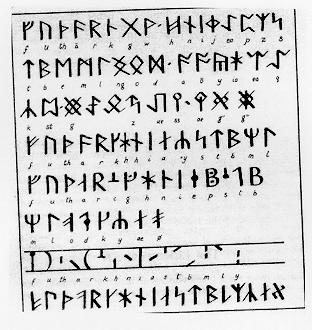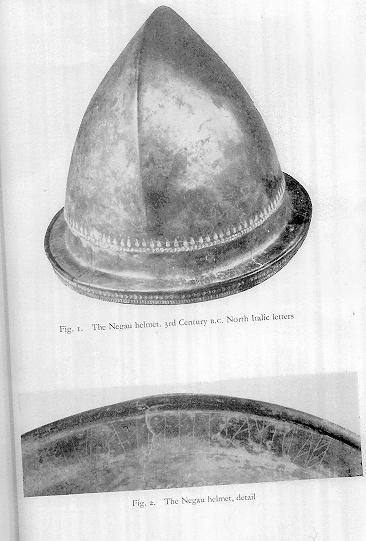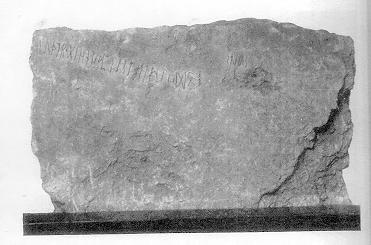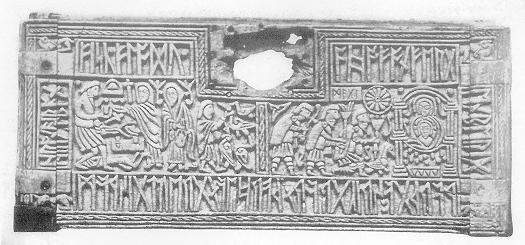
So, you've decided to take your interest further. This page should give a little more information about the different topics throughout the runes. The second Aett is also here. When you have finished learning these thoroughly, then you are two thirds of the way finished! As with the end of the Apprentice page, there's a short quiz at the end. You should be used to the format by now, information block, quiz and reading list and links at the bottom. Have fun!
Besides the Elder Futhark, there are other variations on the runic alphabet. Some of these are shown below, with their most used names. These are sometimes only used in certain circumstances, in certain areas or in certain periods of history.

Above, there are several different types of Futhark, find the wealth rune down the left hand side to define where each new one starts. The 'C' or 'K' rune (6th) changes in shape quite frequently compared to the others. The top one, (the longest) is the Anglo Saxon Futhark, easy to define because of it's double barred 'H' rune. (Though the others use a doube crossed stave to represent 'H') The runes inside the 'bar' are the little used 'dotted runes' and the ones at the bottom are the Armenian runes, formed in the 19th Century under Guido von List in Germany.
The Viking God most associated with the runes is Odin (sometimes known as Runemaster) He is instantly recognisable in illustrations as he is tall, quite old with grey hair, wears a sky blue travellers cloak and hat, pulled down over his face to shield his missing eye. He may carry a staff and be accompanied by two raven called 'thought' and 'memory' who fly around and reported back to him all the things which happened in the world. He has many different names, but is chiefly known as Odin or 'Allfather'. Unsuprisingly, his colour is blue, so if you make a set of runes, you may wish to colour them blue. The legend goes that Odin hung himself on the 'world tree'(or Yggdrasil) for 9 days and nights, having wounded himself with his own spear. He grew dizzy and at the last minute, spied the runes and scooped them up before falling down. He then gave the runes to the wisest people, of which there where only a few.
Alternatively you can use Red to colour your own runes, this is associated with the Viking God Thor (The Thunderer) He was a large man, with flame red hair, a large belt and a hammer for a weapon, which when thrown, always came back to him. You may feel it more appropriate to dedicate your studies to another of the Viking Gods, of which there are many. People wanting to learn more about the Viking Gods and legends should read: The Viking Gods by Clive Barrett.(In the bibliography for my essay, under Essay Pages) This gives stories about the Viking Gods, with some of their most well known legends. There are plenty of books on the subject, if you want to investigate further.
If you have learnt or are still learning the sequence and meanings of runes, try grouping them into 3's. There are 3 runes connected with light, (day, torch and sun) almost every rune can be connected to every other rune in a group of 3. Try it and see how many you can come up with! This will also get your brain thinking: Are there 3 runes to do with people? trees? Transport? If you have done it with groups of 3, try groups of 4 instead. You can take the runes out of order, but don't include a rune twice in the same group!
There are loads of other past uses for the runes. See how many runic objects you can discover by looking... Here are some to start you off..(illustrations below).The Franks Casket, (8th century) page on notes and full description below, The Negau Helmet (4th Century BC), various wands and bractates.


The Negau Helmet. ...................................................... The Kylver Stone
 The Franks Casket (front)
The Franks Casket (front)
 The Franks Casket (lid)
The Franks Casket (lid)
Take a case in point, the runestones of Sweden. There are over 3500 of these to date, mostly recording land and ancestry claims. They are placed along roadways, important boundaries and on private lands. Some are simple: X made this in memory of Y, some include the name of the carver (or cutter) and some even list the 'painter'. This was a person who coloured the runes after they where cut. Recent evidence suggests that many of the runestones where coloured in black, red, white, yellow and blue, with a colour for the background, the runes and the band in which they where placed. In their original state, they must have been a striking site in the wilds of Sweden.
The other link at the bottom of the page (just in case you where wondering) gives examples of 'soothsayers' so far only from early Christian literature - look at the way these people are treated and what they are implied to be capable of.
QUIZ - you may have to start searching elsewhere for the answers to these questions - it should give you foothold into the large amount of information available.
1. Is there a Viking God associated with a hammer and ravens?
2. What is the connection between Runes and Germany in the 20th century? (Answer is more detailed than a name and a date!)
3. How many examples can you find of runes being used as talismans on objects?
4. Could runes be used to curse? Was there a set method for this?
5. The Viking Gods and runes are closely interconnected - investigate their legends and stories to see when and where they use runes - what image of runes does this give?
6. What connections can you find between the Romans and the runes?
7. What differences and similarities are there between the Anglo Saxon Rune Poem and the Icelandic Rune Poem?
Yes, alright, some of the questions are a bit harder this time, but you should be able to cope!
READING LIST-
Advanced pages
Book review
Notes on the Franks Casket
Examples of Soothsayers
Rune 9 - Halgiz
Rune 10 - Naithuz
Rune 11 - Isa
Rune 12 - Jera
Rune 13 - Eihwaz
Rune 14 - Perth
Rune 15 - Algiz
Rune 16 - Sowelu